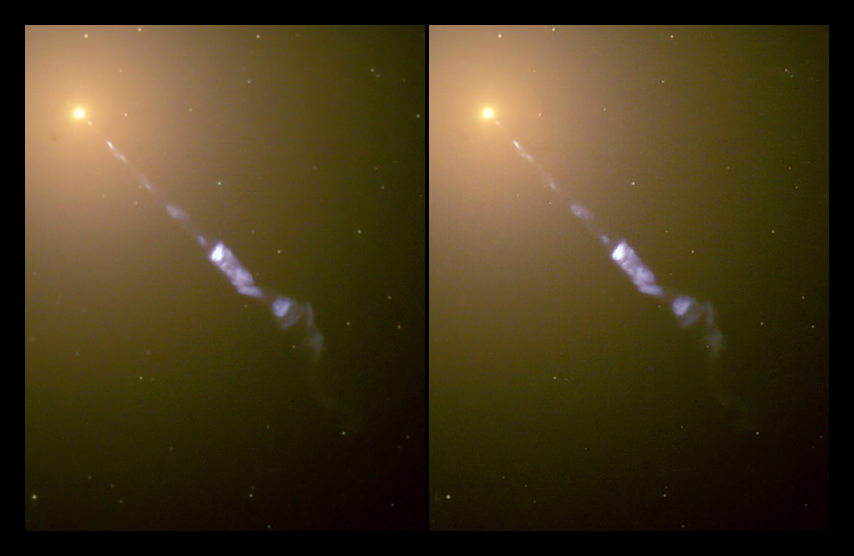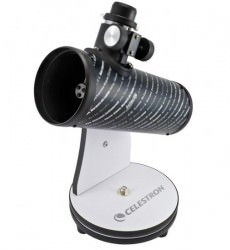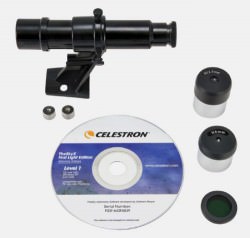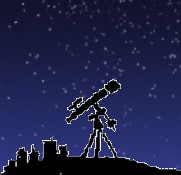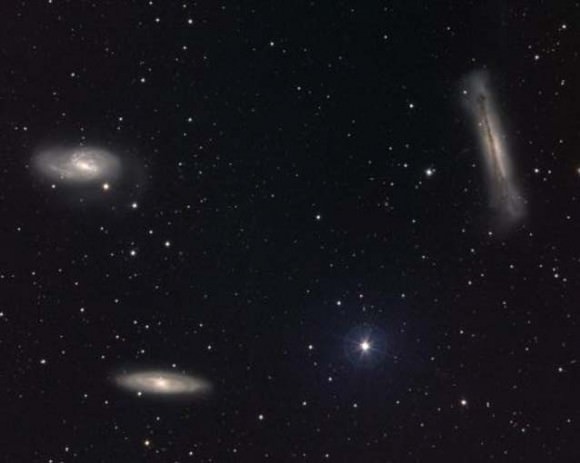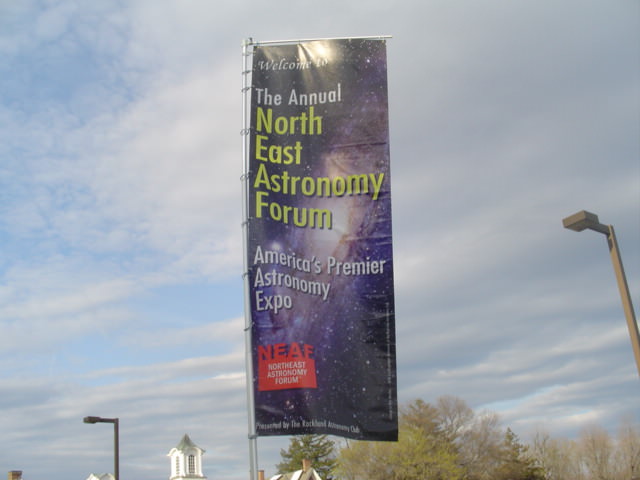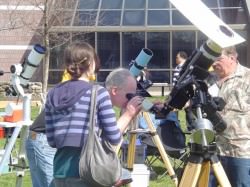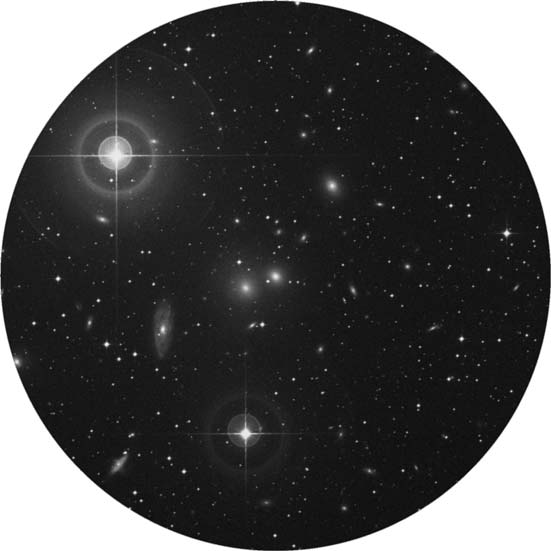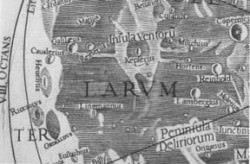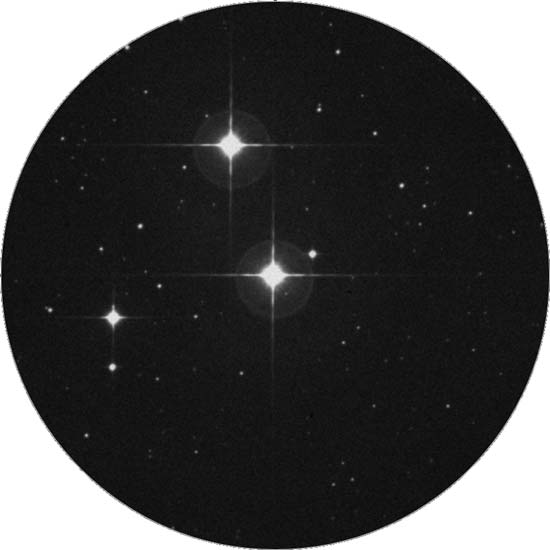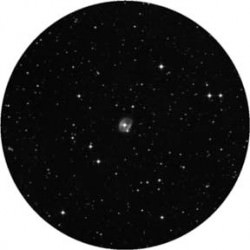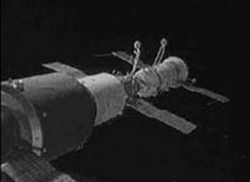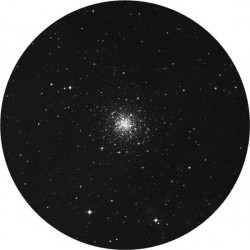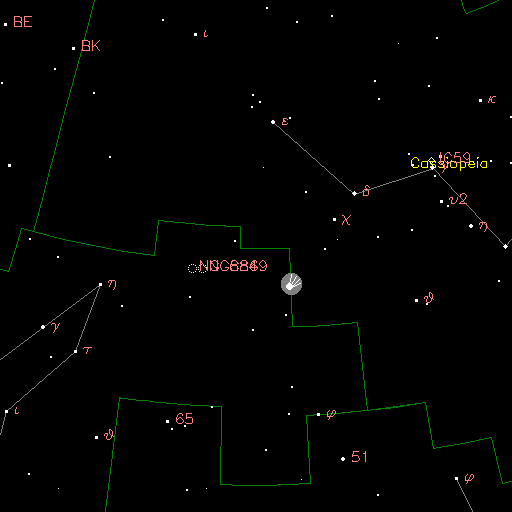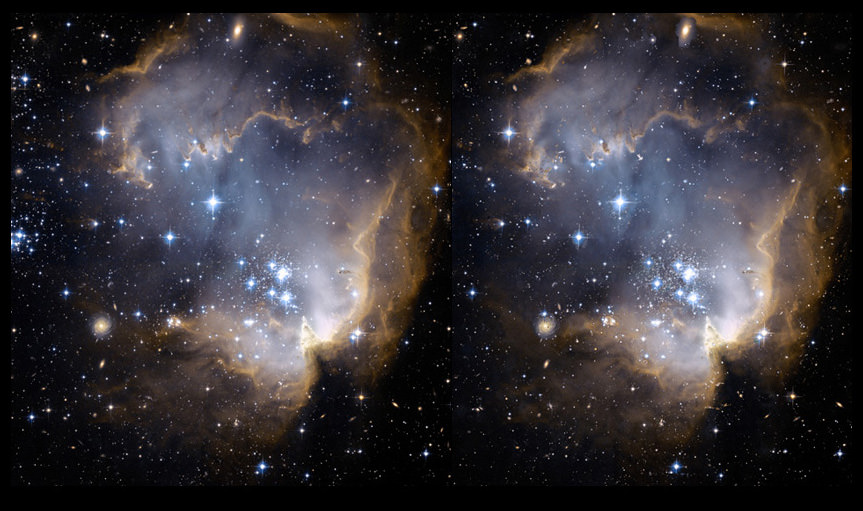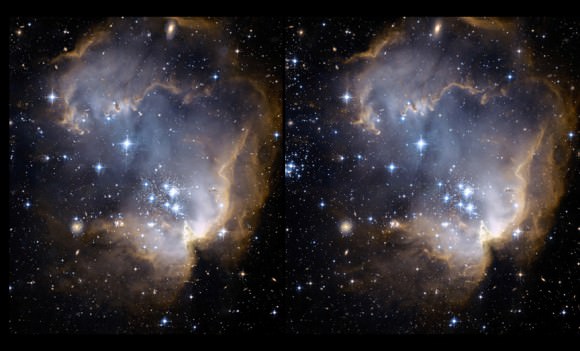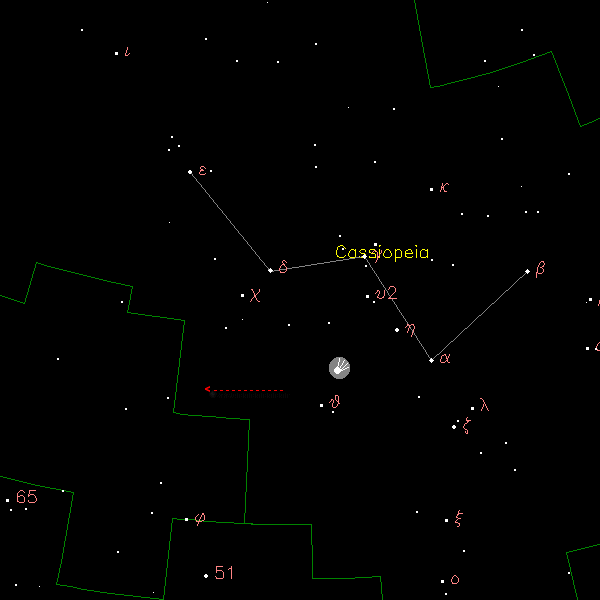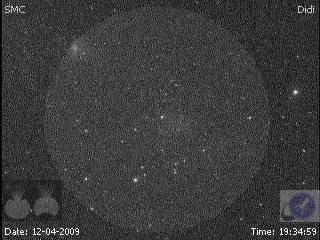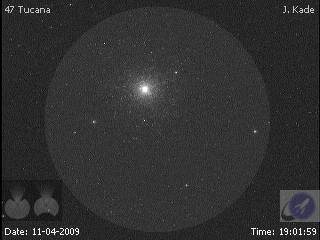[/caption]
We’re all familiar with the photo of the jet of material emanating from the core of the Virgo A galaxy as imaged by the Hubble Space Telescope, but this 5,000 light year long streamer coming from the nucleus of M87 has never been more “in your eyes” than it is through the stereo magic visualizations produced by Jukka Metsavainio. Are you ready to take a closer look at this relativistic jet of extremely powerful plasma emerging from one of the best studied radio galaxies around? Then step inside…
Whenever we present a dimensional visualization it is done in two fashions. The first is called “Parallel Vision” and it is much like a magic eye puzzle. When you open the full size image and your eyes are the correct distance from the screen, the images will seem to merge and create a 3D effect. However, for some folks, this doesn’t work well – so Jukka has also created the “Cross Version”, where you simply cross your eyes and the images will merge, creating a central image which appears 3D. As we learned with the last image, it might not always work for all people, but there are a few other tricks you can try. Now sit back and prepare to be blown away…
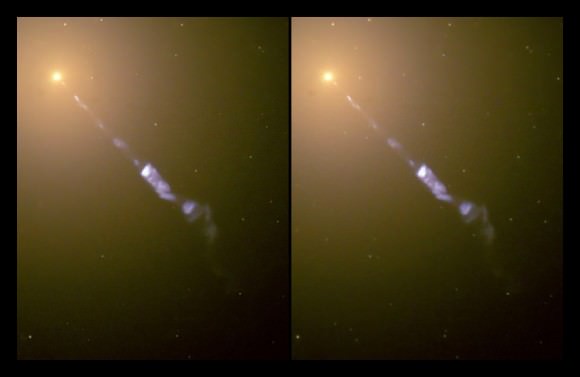
The year is 1918, and high on top of Mt. Hamilton at Lick Observatory an astronomer named Herbert Curtis is busy studying Messier Object 87. But, Mr. Curtis isn’t your ordinary garden-variety astronomer. In just two more years, he and a man named Harlow Shapely were going to have it out publicly about the nature of these “distant fuzzies” and Curtis was going to be eventually proved correct: Spiral “nebulae” were indeed galaxies just like our own. However, good old Herbert was noticing something about M87 that would take nearly 8 decades to discover its true nature… a “curious straight ray” coming straight from its heart. Now, you’ve got to give Herbert some very big credit for being an astute visual observer, because this was back in the day long before wide field imaging camera, infra-red technology, x-ray photography, radio studies and more. Heck, it would be 2 more years before Hubble began identifying Cepheid variables and 10 more years before interstellar absorption was discovered!
Are you ready to fast forward to 1977? Because it would be about that long before another noble name in galaxy studies would again reveal astonishing visual things about M87’s jet by resolving knots and clouds – Halton C. Arp of Mt. Palomar and J. Lorre of JPL. “The shred itself, however, is the object of most significance for establishing the reality of the ejection of the radio source. It is difficult to make a quantitative statement, but objects of this nature are not frequently seen. The inference is plain that the radio source has either left a wake behind it, (i.e. condensations along its track) or that this is some kind of jet or material associated with the ejection of the radio source form the parent peculiar galaxy.”
It wasn’t long until the discovery of a disk of rapidly rotating gas around the nucleus of M87 occurred and thanks to the Hubble Space telescope, we were taking closer than ever looks into the violent active nucleus of this galaxy. “We see almost a dozen clouds which appear to be moving out from the galaxy’s center at between four and six times the speed of light. These are all located in a narrow jet of gas streaming out from the region of the black hole at the galaxy’s center,” said Dr. John Biretta of the Space Telescope Science Institute. “We believe this apparent speed translates into an actual velocity just slightly below that of light itself.”
What we know now is the jet in M87 connects the innermost black hole to the outer parts of the source. It supplies the radio source and the surrounding region with energy and relativistic plasma. The speeds reported are two to three times faster than the fastest motions previously recorded in M87, the only nearby galaxy to show evidence for superluminal motion. “This discovery goes a long way towards confirming that radio galaxies, quasars and exotic BL Lac objects are basically the same beast, powered by super massive black holes, and differ only in orientation with respect to the observer,” Biretta said.
And this time the orientation is right in your eyes…
Many thanks to JP Metsavainio of Northern Galactic for his magic with Hubble Space Telescope images and allowing us this incredible look inside another mystery of space.

